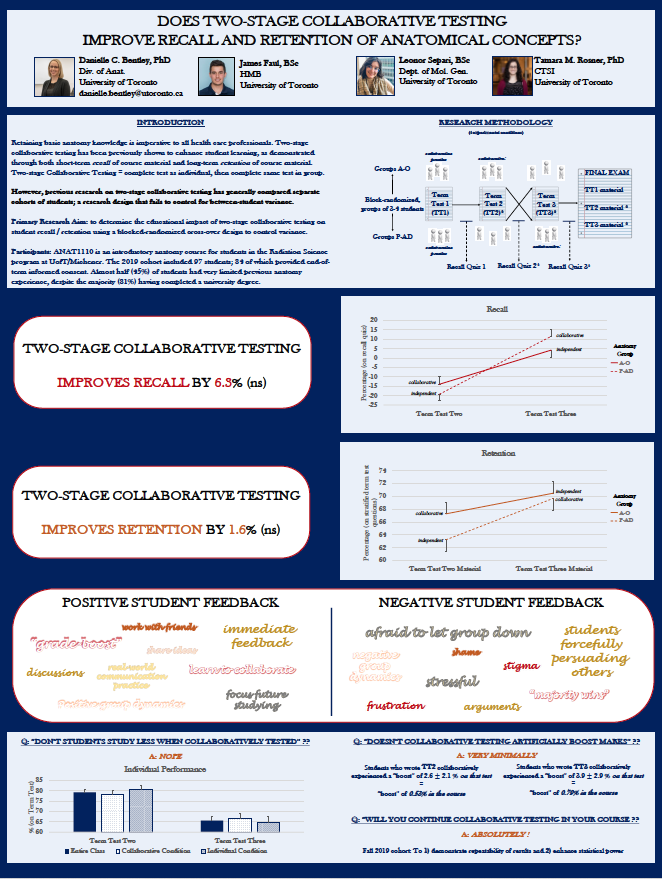Danielle Bentley

Assistant Professor, Surgery, Division of Anatomy, Faculty of Medicine
Title: Does Two-stage Collaborative Testing Improve Recall and Retention of Anatomical Concepts?
Research Focus: Anatomy is a foundational component of biomedical sciences. To directly address concerns regarding retention of anatomical knowledge, course assessments can be redesigned as learning opportunities. Collaborative two-stage testing is an alternative to traditional ‘independent’ testing, previously shown to improve final exam performance and retention of course material. However, past evaluations of student retention have generally compared separate cohorts of students who write either an individual test or a two-stage test – such a design fails to control for between-student variables. Building on previous work in the field, the aim of this research is to determine the impact of two-stage collaborative testing on retention of anatomy knowledge while controlling for between-student variables by employing a randomized crossover research design. Based on previous cohort studies, it is hypothesized that two-stage collaborative testing will improve retention of anatomical material.
Study Design: At the initiation of ANAT110 (Anatomy for Medical Radiation Sciences) students (n=94) were randomized into 30 “anatomy groups” (AGs) of 3-4 students. Throughout the course AGs worked together on in-class and in-laboratory learning activities, including course assessments. Students were assessed using three segmented term tests (TT; 20% each) and one cumulative final exam (40%). Each TT began with all students individually completing a multiple choice exam (the IND condition). Following this, some students would convene in their AGs to collaboratively complete the same multiple choice exam in a condensed amount of time (the COL condition). To control for learning effects of the collaborative process, all 30 AGs completed TT1 as IND + COL. Experimental testing conditions were TT2 and TT3, where half the class completed an IND examination only and the other half completed an IND + COL examination. Using individualized final examination performance, segmented and coded for previous testing condition (IND vs. COL), mixed-model ANCOVA will reveal the direct impact of testing condition on anatomy retention. I will also administer an end-of-term online survey.
Impact: Holistically evaluating the educational impact and student perceptions of two-stage collaborative testing is imperative in order to determine the future utility of this strategy in the context of human anatomy education.
SoTL Cohort Poster presented at the 2019 Teaching and Learning Symposium
